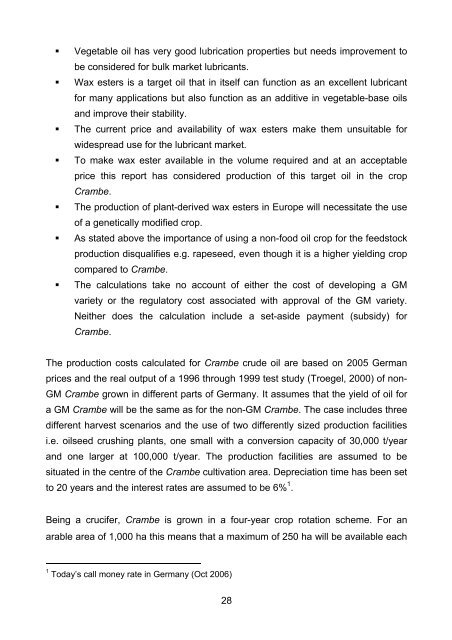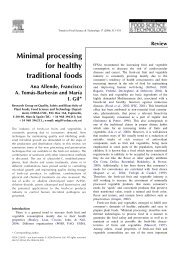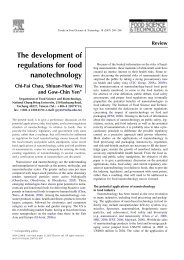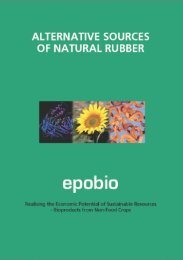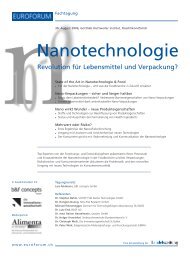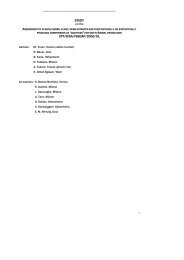production of wax esters in crambe
production of wax esters in crambe
production of wax esters in crambe
You also want an ePaper? Increase the reach of your titles
YUMPU automatically turns print PDFs into web optimized ePapers that Google loves.
• Vegetable oil has very good lubrication properties but needs improvement to<br />
be considered for bulk market lubricants.<br />
• Wax <strong>esters</strong> is a target oil that <strong>in</strong> itself can function as an excellent lubricant<br />
for many applications but also function as an additive <strong>in</strong> vegetable-base oils<br />
and improve their stability.<br />
• The current price and availability <strong>of</strong> <strong>wax</strong> <strong>esters</strong> make them unsuitable for<br />
widespread use for the lubricant market.<br />
• To make <strong>wax</strong> ester available <strong>in</strong> the volume required and at an acceptable<br />
price this report has considered <strong>production</strong> <strong>of</strong> this target oil <strong>in</strong> the crop<br />
Crambe.<br />
• The <strong>production</strong> <strong>of</strong> plant-derived <strong>wax</strong> <strong>esters</strong> <strong>in</strong> Europe will necessitate the use<br />
<strong>of</strong> a genetically modified crop.<br />
• As stated above the importance <strong>of</strong> us<strong>in</strong>g a non-food oil crop for the feedstock<br />
<strong>production</strong> disqualifies e.g. rapeseed, even though it is a higher yield<strong>in</strong>g crop<br />
compared to Crambe.<br />
• The calculations take no account <strong>of</strong> either the cost <strong>of</strong> develop<strong>in</strong>g a GM<br />
variety or the regulatory cost associated with approval <strong>of</strong> the GM variety.<br />
Neither does the calculation <strong>in</strong>clude a set-aside payment (subsidy) for<br />
Crambe.<br />
The <strong>production</strong> costs calculated for Crambe crude oil are based on 2005 German<br />
prices and the real output <strong>of</strong> a 1996 through 1999 test study (Troegel, 2000) <strong>of</strong> non-<br />
GM Crambe grown <strong>in</strong> different parts <strong>of</strong> Germany. It assumes that the yield <strong>of</strong> oil for<br />
a GM Crambe will be the same as for the non-GM Crambe. The case <strong>in</strong>cludes three<br />
different harvest scenarios and the use <strong>of</strong> two differently sized <strong>production</strong> facilities<br />
i.e. oilseed crush<strong>in</strong>g plants, one small with a conversion capacity <strong>of</strong> 30,000 t/year<br />
and one larger at 100,000 t/year. The <strong>production</strong> facilities are assumed to be<br />
situated <strong>in</strong> the centre <strong>of</strong> the Crambe cultivation area. Depreciation time has been set<br />
to 20 years and the <strong>in</strong>terest rates are assumed to be 6% 1 .<br />
Be<strong>in</strong>g a crucifer, Crambe is grown <strong>in</strong> a four-year crop rotation scheme. For an<br />
arable area <strong>of</strong> 1,000 ha this means that a maximum <strong>of</strong> 250 ha will be available each<br />
1<br />
Today’s call money rate <strong>in</strong> Germany (Oct 2006)<br />
28


